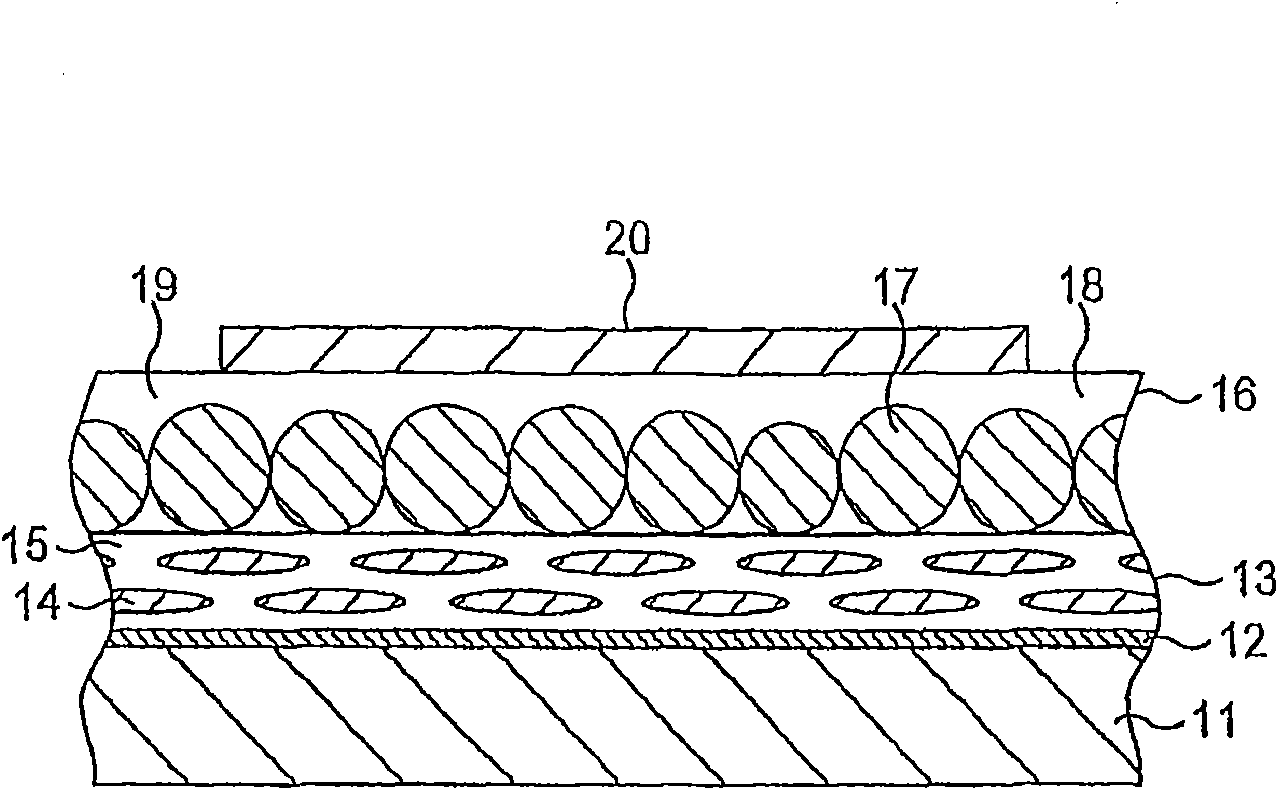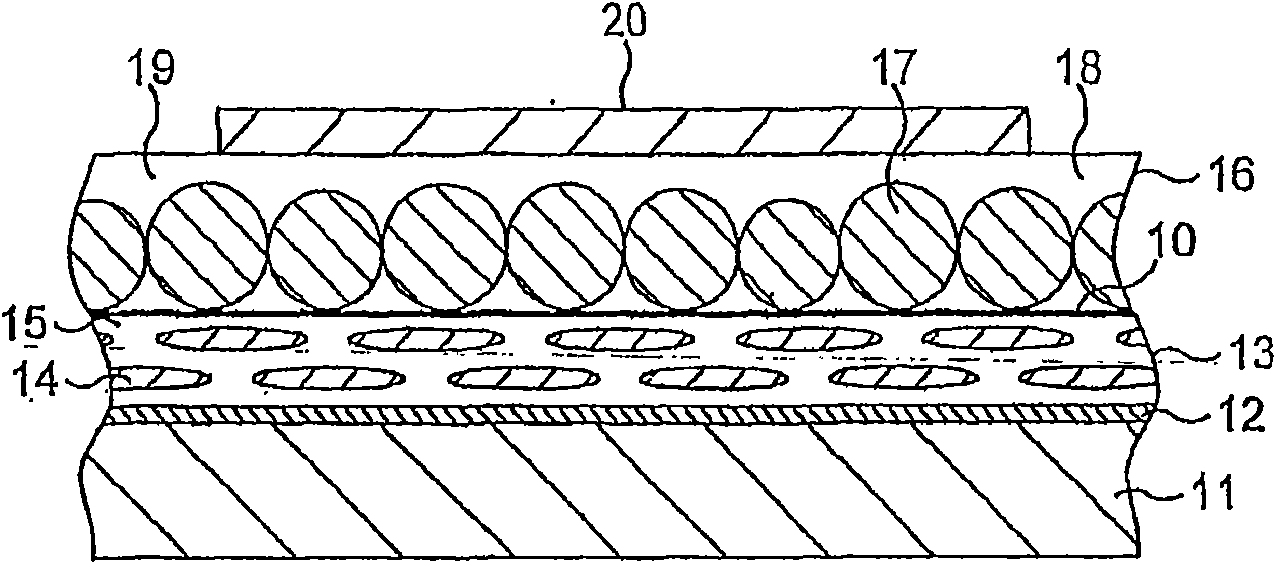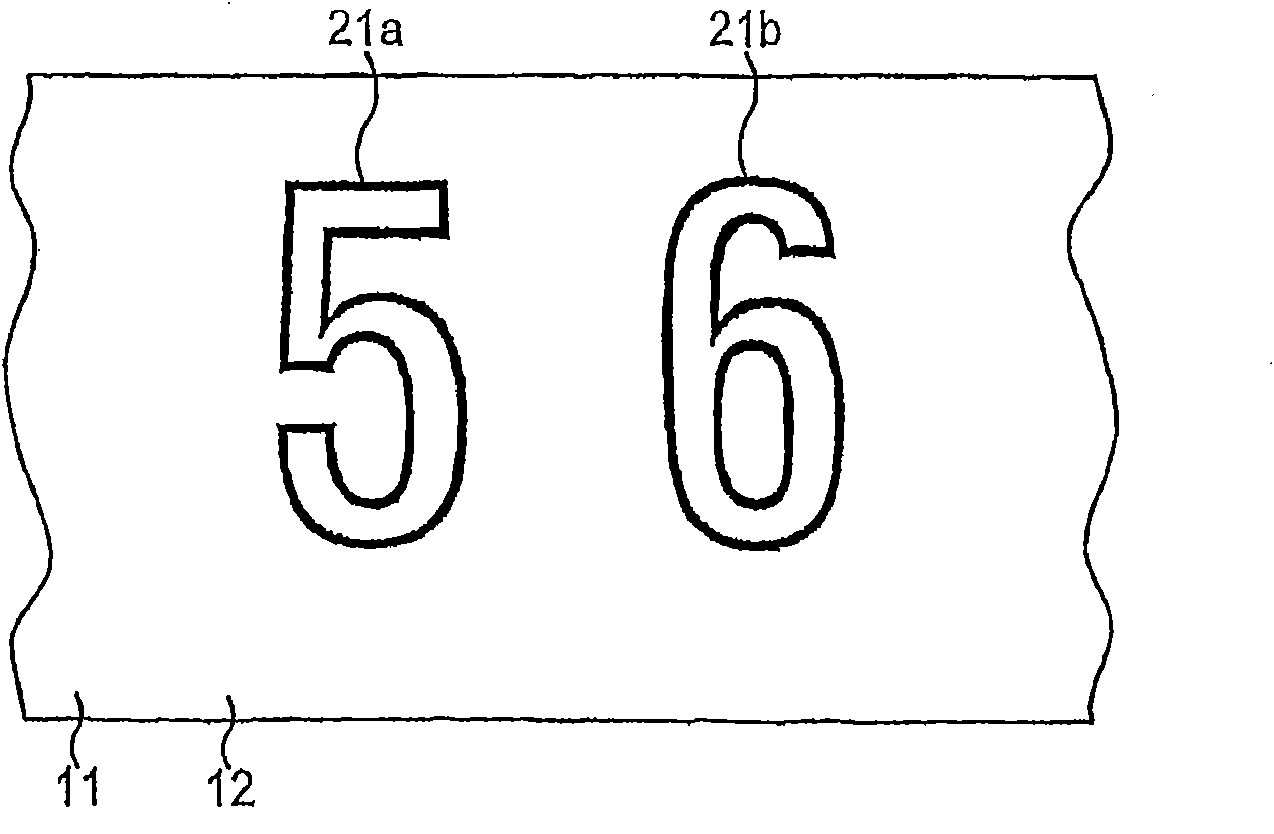Electroluminescent displays
A luminescent and display technology, applied in the field of electroluminescent displays, can solve the problems of reducing the electro-optical performance of PDLC and poor environmental stability of displays, and achieve the effect of increasing environmental stability
- Summary
- Abstract
- Description
- Claims
- Application Information
AI Technical Summary
Problems solved by technology
Method used
Image
Examples
example 1
[0071] A stock solution of nematic liquid crystal BL006 (Merck Chemicals) containing 2% black dye S428 (Mitsui Chemicals) was prepared by adding 1 gram of S428 to 49 grams of BL006 and stirring the mixture at about 60°C for 1 hour. The mixture was placed in an oven at 60°C for another 18 hours, then cooled to room temperature and filtered through a 0.2 micron filter. Desmodur N3200 (Bayer) (1.8 g) was added to a portion of the dyed liquid crystal (36 g) and the mixture was stirred at 60°C until a homogeneous solution was produced (about 10 minutes). This solution was then added to 10% polyvinyl alcohol (Celvol 205, Celanese Chemicals) (120 g) stirred (350 rpm, 4 cm diameter impeller), and the temperature was maintained at 50°C by means of a circulating water bath. . After the addition is complete, the impeller speed is increased to 3000 rpm and maintained for 8 minutes, at which time the speed is reduced to 750 rpm. The temperature was maintained at 50°C and stirring was cont...
example 2
[0077] According to the method of Example 1, the PDLC coating was prepared using BL093 (Merck Chemicals) instead of BL006. The final PDLC contained 60% by weight of BL093 (including 3% by weight (based on BL093) S428).
PUM
 Login to View More
Login to View More Abstract
Description
Claims
Application Information
 Login to View More
Login to View More - Generate Ideas
- Intellectual Property
- Life Sciences
- Materials
- Tech Scout
- Unparalleled Data Quality
- Higher Quality Content
- 60% Fewer Hallucinations
Browse by: Latest US Patents, China's latest patents, Technical Efficacy Thesaurus, Application Domain, Technology Topic, Popular Technical Reports.
© 2025 PatSnap. All rights reserved.Legal|Privacy policy|Modern Slavery Act Transparency Statement|Sitemap|About US| Contact US: help@patsnap.com



